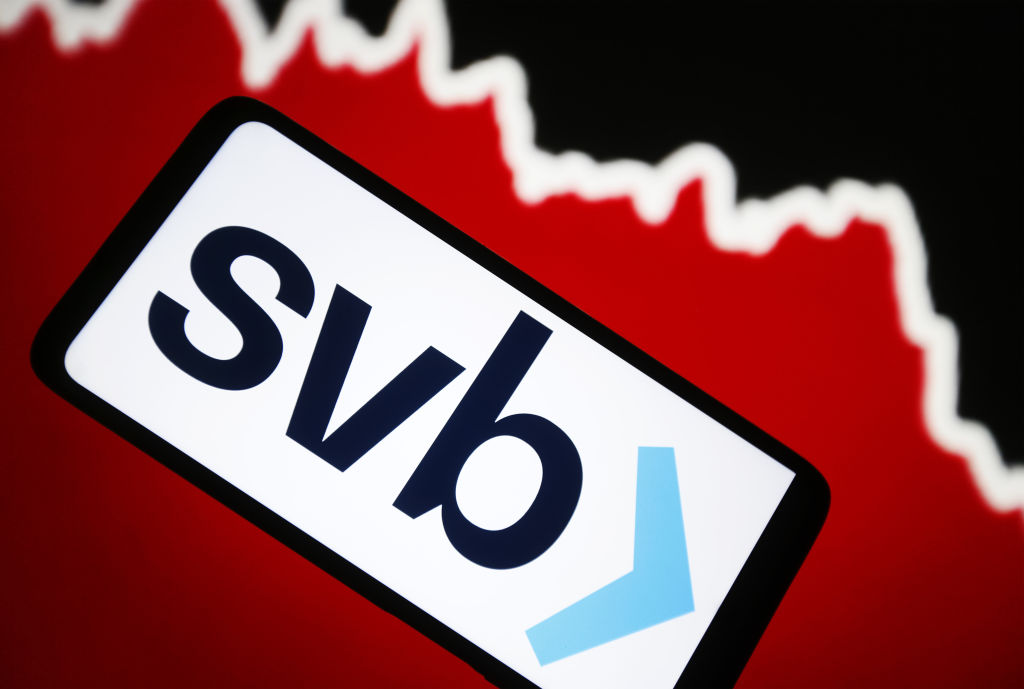What a weekend it was for Silicon Valley Bank and the entire financial market. After plenty of worst-case scenarios being discussed in recent days, it seems that the public may no longer need to panic now that a crisis has been mostly averted. But is this the first domino to fall in a broader deteriorating banking system, or was this an isolated event in a paranoid economic landscape? There is still plenty of information to comb through in the post-SVB rubble.
While everyone’s attention was focused on SVB, Signature Bank was another crisis in the making. The institution was a major lender in the cryptocurrency industry. US regulators shut down the New York-based bank on Sunday to avoid an intensifying banking crisis. This was the second-largest bank in the crypto ecosystem next to Silvergate, which shut its doors and started a liquidation process. Investors might have sensed that the writing was on the wall, with shares plummeting nearly 23% on Mar. 10.
Saving the Banks?
Hours before the start of the business day, banking regulators unveiled a plan to ensure depositors could access their capital at Silicon Valley Bank and Signature Bank, which would potentially avert a systemic collapse.
In a joint statement on Mar. 12, the Treasury Department, the Federal Reserve, and the Federal Deposit Insurance Corporation (FDIC) announced an emergency scheme that would designate SVB and Signature as systemic risks. As a result, the three organizations will have different roles to play.
This plan allows the Treasury to unwind both banks that “fully protects all depositors” and ensures taxpayers bear no cost. One of these measures involves the FDIC using its deposit insurance fund to provide uninsured depositors with up to $250,000. The Treasury will also offer up to $25 billion from its Exchange Stabilization Fund to prevent any losses from the Fed funding campaign.
The US central bank will establish a new Bank Term Funding Program (BTFP) to shield other institutions impacted by the market instability associated with the SVB failure. The Eccles Building’s facility will provide loans of up to one year to banks, credit unions, and savings associations. In exchange, these entities will need to offer top-notch collateral, like Treasurys, mortgage-backed securities, and agency debt. The Fed confirmed it would ease credit conditions at its discount window.
 “Today we are taking decisive actions to protect the U.S. economy by strengthening public confidence in our banking system,” said Fed Chair Jerome Powell, Treasury Secretary Janet Yellen, and FDIC Chair Martin Gruenberg in a statement. “This action will bolster the capacity of the banking system to safeguard deposits and ensure the ongoing provision of money and credit to the economy.”
“Today we are taking decisive actions to protect the U.S. economy by strengthening public confidence in our banking system,” said Fed Chair Jerome Powell, Treasury Secretary Janet Yellen, and FDIC Chair Martin Gruenberg in a statement. “This action will bolster the capacity of the banking system to safeguard deposits and ensure the ongoing provision of money and credit to the economy.”
Before the announcement, Yellen told CBS’ “Face the Nation” that there would be no government bailout of SVB. “We’re not going to do that again. But we are concerned about depositors and are focused on trying to meet their needs,” she said. “We want to make sure that the troubles that exist at one bank don’t create contagion to others that are sound. And our goal always is supervision and regulation is to make sure that contagion can’t occur.”
What has yet to be determined are SVB’s assets and if one or multiple buyers will arrive on the scene.
Sleep, My Love
Surely, with the federal government springing into action before the Mar. 13 opening bell, a potential contagion effect is over, right? Although this might feel like a situation requiring a 1990s rom-com slow clap, the US financial system might not be out of the woods yet, as there are plenty of banks across the United States that are in a similar predicament as SVB, Silvergate, and Signature.

(Pavlo Gonchar/SOPA Images/LightRocket via Getty Images)
Silicon Valley Bank became the second-largest banking failure in US history partly because of its business decision to leverage capital by using customer deposits or borrowed funds to lend capital or purchase securities. The securities investments have two categories: available for sale (sold at any time) and held to maturity (securities banks intend to hold until repayment). This relates to the next accounting term: accumulated other comprehensive income (AOCI), which is defined as “net unrealized holding gains (losses) on available-for-sale securities, accumulated net gains (losses) on cash flow hedges, cumulative foreign currency translation adjustments, and accumulated defined benefit pension and other postretirement plan adjustments.”
For SVB, the AOCI as of Dec. 31, 2023, was -$1.911 billion.
Since its 48-hour downfall, market observers have been scanning the banking industry to determine if other banks are facing a similar situation to SVB. Using data from FactSet, MarketWatch put together a list of 20 banks that have signaled comparable red margin flags, including negative AOCI as a percentage of total equity capital: Customer Bancorp, First Republic Bank, New York Community Bancorp, Columbia Financial, First Foundation, and several others.
“To be sure, these numbers don’t mean that a bank is in trouble, or that it will be forced to sell securities for big losses. But SVB had both a troubling pattern for its interest margins and what appeared to be a relatively high percentage of securities losses relative to capital as of Dec. 31,” the business news publication reported.
But while the story might be over for now, the repercussions are still vast. Venture capital firms and hedge funds are placing bids for stakes in startups with banking ties to SVB at a sharp discount. Some industry experts contend that there will be distress in both the financial sector and startup community, thanks to lower liquidity levels. As for the state of SVB, it remains unclear if a private buyer will swoop in and acquire the California-based lender.
Fine and Dandy
The financial markets cheered the news, as the leading benchmark indexes rallied more than 1% heading into the opening session of the trading week. President Joe Biden also woke up from his four-hour Sunday evening nap and informed the American people that he was ebullient about the emergency rescue plan. However, he warned of broader consequences stemming from this crisis. “I am firmly committed to holding those responsible for this mess fully accountable and to continuing our efforts to strengthen oversight and regulation of larger banks so that we are not in this position again,” Biden said in a statement. Whether a crisis has been averted or not remains to be seen, but it is almost certain that lending standards will become stricter, credit conditions will tighten, and smaller banking outfits will receive greater scrutiny moving forward. That is until the next era of easy money.



